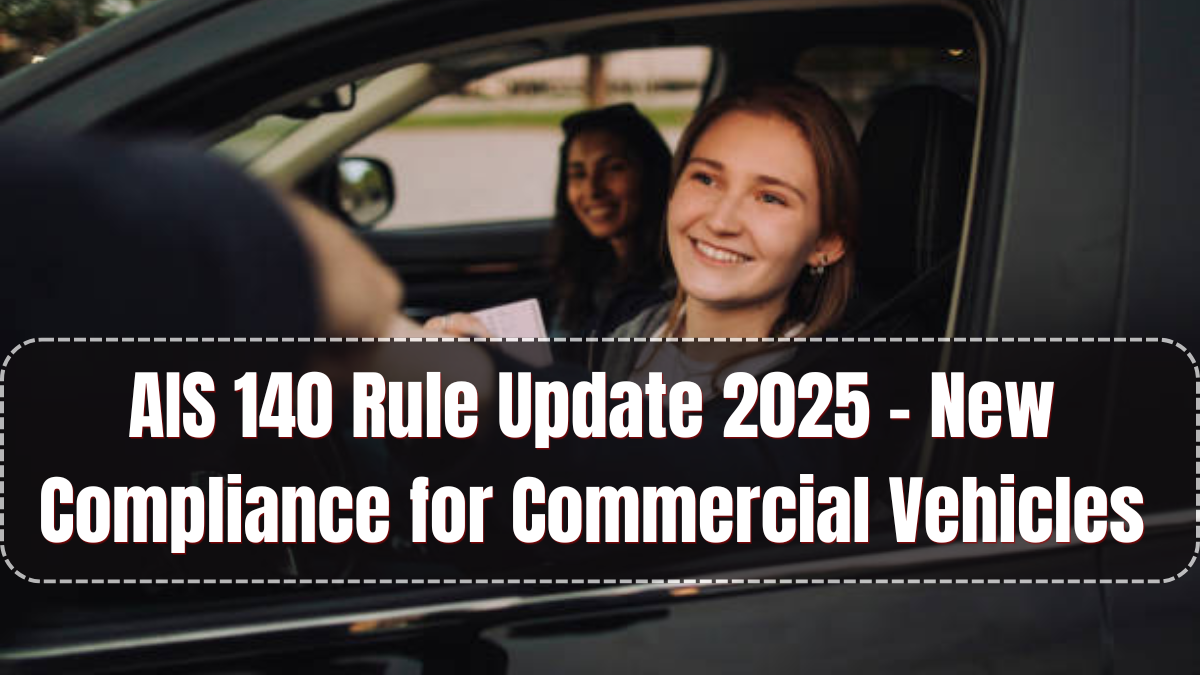The Ministry of Road Transport and Highways (MoRTH) has enforced fresh updates under AIS 140 guidelines in 2025, marking a major shift in how commercial vehicles operate across India. The AIS 140 standard, originally designed to enhance road safety and fleet monitoring, now has broader implementation, stricter deadlines, and deeper integration with state transport authorities.
With GPS-based tracking, emergency buttons, and advanced compliance protocols, the latest updates aim to streamline transportation services and make Indian roads safer and smarter.

What Is AIS 140?
AIS 140 (Automotive Industry Standard 140) is a set of requirements mandated for public and commercial transport vehicles in India. It outlines specifications for:
-
GPS tracking devices
-
Emergency panic buttons
-
Real-time data transmission to state control centers
-
Health and diagnostic reports of the vehicle
Initially introduced for public transport buses and school vans, AIS 140 is now mandatory across a broader vehicle range as of 2025.
Key Changes Introduced in 2025
The new 2025 update to AIS 140 brings in several operational changes and tightens enforcement:
-
Mandatory for all commercial vehicles: Goods carriers, taxis, and tourist buses must comply, regardless of state.
-
Live integration with Vahan database: Tracking devices now sync directly with the national vehicle registry.
-
Installation deadline: All vehicles registered before January 2025 must comply by October 31, 2025.
-
State enforcement checkpoints: RTOs have begun roadside checks to penalize non-compliant vehicles.
-
Remote immobilization option: Fleet owners can now immobilize vehicles remotely in case of theft or non-compliance.
These updates are aimed at creating a robust ecosystem where authorities can instantly track vehicles during emergencies or violations.
Who Needs to Comply?
The following categories are covered under the AIS 140 rule changes:
-
State-run buses (inter- and intra-city)
-
Private school buses and vans
-
Aggregator cabs and commercial taxis
-
Goods transport vehicles above 3.5 tons
-
Rental vehicles and inter-state luxury buses
Failure to comply may lead to penalties, fitness test failures, or suspension of route permits.
Benefits of AIS 140 Implementation
The updated AIS 140 framework is not just a regulatory requirement—it also enhances operational safety, transparency, and efficiency.
-
Passenger safety: Emergency alerts can be sent to police or traffic control in real-time.
-
Fleet management: Fleet owners can monitor driver behavior, routes, and fuel usage through dashboards.
-
Insurance discounts: Vehicles with working AIS 140-compliant systems may qualify for premium discounts.
-
Theft recovery: GPS tracking allows stolen vehicles to be located quickly.
-
Road discipline: Real-time tracking deters drivers from rash driving or route violations.
These collective benefits make AIS 140 a critical reform for the logistics and public transport sectors.
Compliance Tips for Vehicle Owners
If you own or manage commercial vehicles, here’s what you need to do:
-
Install a certified AIS 140 GPS device with embedded panic buttons.
-
Ensure device is IRNSS and GLONASS compatible, not just GPS-based.
-
Update KYC documents with the local RTO to avoid renewal issues.
-
Register your vehicle’s tracking ID with the relevant state transport monitoring server.
-
Check your device provider is approved by MoRTH and NIC.
FAQs
What is the last date for AIS 140 compliance in 2025?
All pre-2025 registered commercial vehicles must comply by October 31, 2025.
Is AIS 140 mandatory for private cars?
No, AIS 140 is only mandatory for commercial and public transport vehicles.
What happens if my commercial vehicle is not compliant?
Non-compliant vehicles may be fined, denied fitness renewal, or even deregistered.
Can I install the AIS 140 device on my own?
No, it must be installed and registered by an authorized dealer recognized by the transport department.
Is there any financial assistance or subsidy?
Some state governments are offering partial reimbursement or GST exemptions on AIS 140 devices—check with your local transport authority.
Click here to know more.
